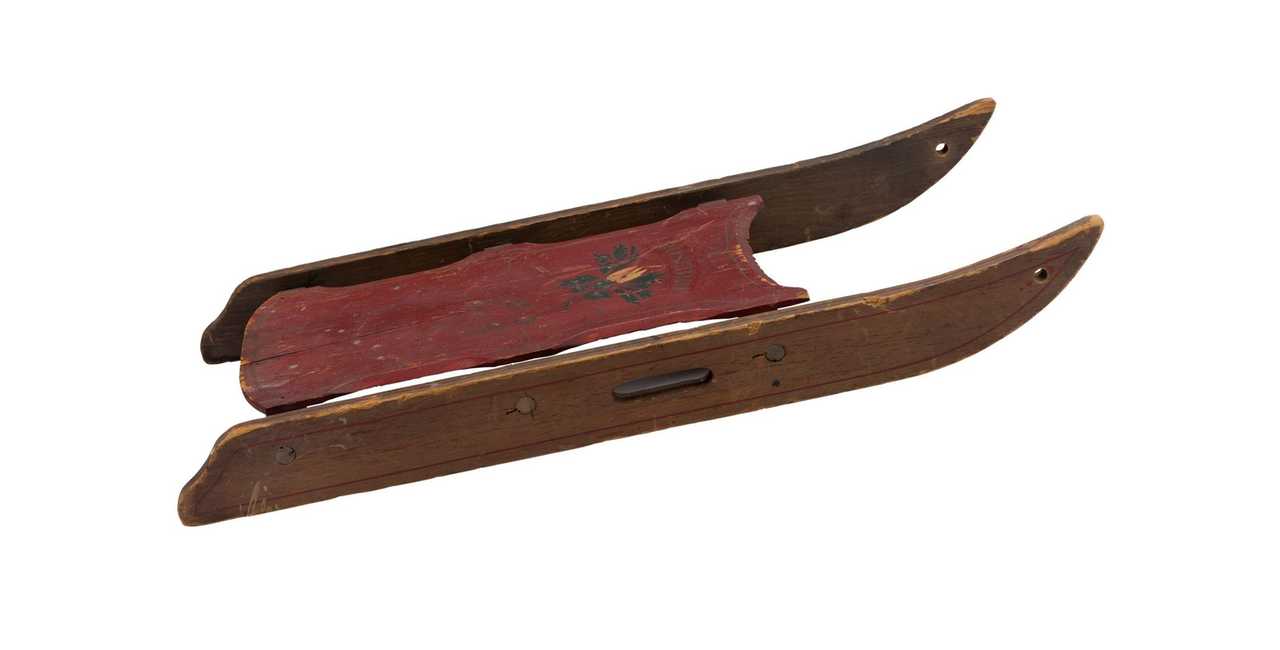A Historic Discovery and Sale of a Cinematic Icon
A long-lost piece of cinematic history has recently made headlines after being sold for nearly $15 million. The “Rosebud” sled, an iconic prop from the 1941 film Citizen Kane, was auctioned off for $14.75 million on Wednesday, July 16, as part of a four-day entertainment auction in Dallas. This sale marks a significant moment in the world of movie memorabilia.
The Rosebud sled is now the second most valuable movie prop ever sold, trailing only Dorothy’s ruby slippers from The Wizard of Oz, which were purchased for $32.5 million in December 2024. The sled, once owned by Joe Dante, the director of Gremlins, was one of only three known to exist from the classic Orson Welles film. Its journey from obscurity to high-profile auction is as compelling as the film itself.
A Journey Through Time
The sled was discovered in 1984 while Dante was filming on the former RKO Pictures lot. At the time, a crew member had planned to throw the prop away while clearing storage areas. However, Dante saw potential in the item and took it upon himself to preserve it for decades. His dedication to protecting this piece of cinematic history was evident in his statement: “I’ve had the honor of protecting this piece of cinematic history for decades. To see Rosebud find a new home — and make history in the process — is both surreal and deeply gratifying. It’s a testament to the enduring power of storytelling.”
Dante even incorporated the sled into some of his own films, including Explorers, The ‘Burbs, and Gremlins 2: The New Batch. He also used it in an episode of the 1991-93 NBC television series Eerie, Indiana.
Scientific Validation and Historical Significance
Scientific testing commissioned by Dante confirmed that the wood of the sled predates atomic bomb testing and matches the pine used in another authenticated sled. This validation adds to the historical significance of the prop, making it a valuable artifact not just for collectors but for historians as well.
Steven Spielberg once purchased one of the other verified sleds in 1982 for $60,500, while the other was sold to an anonymous buyer in 1996 for $233,500. These figures highlight the growing interest in preserving and valuing movie props that are tied to iconic films.
The Auction Process and Public Interest
Heritage Auctions, the company handling the sale, described the event as one of the most important in entertainment auction history. Joe Maddalena, executive vice president at Heritage, emphasized the importance of these items: “These aren’t just props. They’re mythic objects. They tell the story of Hollywood’s greatest moments, one piece at a time, each tied to a memory, a performance, a legend. We’re honored to bring them to the fans, collectors and institutions who will preserve them for the generations to come.”
The auction listing described the prop as unrestored, featuring original red paint, stenciled lettering, signs of production wear, and rope still threaded through the runners. Nail holes suggest the sled’s metal rails were removed during World War II scrap drives.
The Role of the Sled in the Film
Experts believe that the Rosebud sled and another version were used during a pivotal flashback scene where young Charles Foster Kane plays in the snow before learning he will be taken from his family. This scene is one of the most memorable in the film and underscores the emotional weight of the sled as a symbol of lost innocence.
Other Notable Sales and Cultural Impact
While the Rosebud sled is the centerpiece of this story, other notable sales have also captured public attention. For instance, the “Largest Piece of Mars on Earth” sold for $5.3 million at a NYC auction. Additionally, Marty McFly’s iconic guitar from Back to the Future went missing, prompting calls for help in finding it. Another rare 1950s beer can sold for a record $111,000 at auction.
These events reflect a broader cultural fascination with unique and historically significant items, especially those tied to popular media and entertainment. As more pieces of cinematic history come to light, their value continues to grow, not just in monetary terms but in their ability to connect people to the stories that have shaped our collective imagination.







